Our history
The history of DAW SE has its origins in research and technical quality which were always the incentive and objective of all the activities. Numerous innovations as well as strong growth and increasing internationalisation today have made the company No.3 in the European market for building coatings and the market leader in the German market.
1885
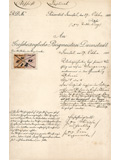
Ernst Murjahn and his son Eduard of the Hamburg export and import trading company "Ernst Murjahn & Son" acquire rights for mining manganese in the Odenwald region of Germany. In the following soil analysis Eduard Murjahn stumbles on hornblende, an important mineral of the amphibole group.
1889
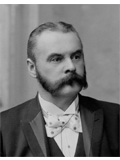
Eduard Murjahn concludes on behalf of "Ernst Murjahn & Son" the first mining contracts for working mineral deposits and finds a method of refining the amphibole that has been found. In 1889 in Ernsthoften/Odenwald he founds the "Deutschen Amphibolin-Werke von Eduard Murjahn" and then begins with the manufacture of paint and plaster powders and anti-rust paints.
1894
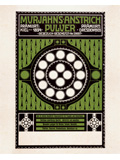
Robert Murjahn, son of Eduard Murjahn, develops a plaster powder paint based on lime and chalk. In 1894 the powder receives an honorary diploma at an exhibition in Kiel and is awarded a gold medal.
1895
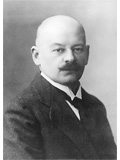
Robert Murjahn founded the company "Deutsche Amphibolin-Werke von Robert Murjahn" in Ober-Ramstadt in 1895. The plaster powder paint and "Murjahn's powder paint" are being produced from now on.
1909
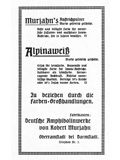
"Alpinaweiß" is registered as a brand name for limewash. Four years later the production of the first cold-water soluble size powder paint "Alpinaweiß" begins.
1926
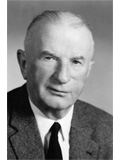
The 24-year old Dr. Robert Murjahn, son of the company founder, enters the company.
1928
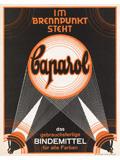
Dr. Robert Murjahn develops the aqueous dispersion binder "Caparol" with the aid of which the decorator can produce the required paint himself from pigments and fillers. The brand name is derived from the first letters of the three constituents casein, paraffin and Chinese wood oil (oleum). The new product introduces dispersion binder technology into the painting trade.
1957

The first thermal insulation composite systems are developed and Disbon GmbH is founded for producing building protection products.
1965

In terms of turnover DAW is Germany's largest manufacturer of dispersion paints.
1966

The Austrian Synthesa-Chemie in Perg, Austria (manufacturer of dispersion paints, adhesives and sandpaper for the wood industry), is taken over.
1981

Capatect Dämmsysteme GmbH & Co. Energietechnik KG is founded in Ober-Ramstadt. Capactect markets thermally insulating composites and render/plaster systems.
1983
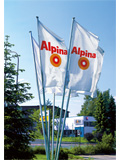
Founding of Alpina Farben Vertriebs GmbH & Co. KG, Ober-Ramstadt. The development of the DIY segment is systematically and successfully started.
1984
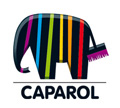
The striped elephant becomes the new company logo for Caparol. It is presented for the first time at the "Paint" exhibition in Munich.
1992

Take-over of Lacufa AG, Berlin from the trust establishment, Treuhandanstalt Berlin. The take-over included production plants in Fürstenwalde, Köthen, Rückmarsdorf and Nerchau as well as Lacufa offices in Moscow and St. Petersburg.
1995

After many years of co-operation with DAW Alligator is incorporated into the corporate group as an independent brand with its own location and profile.
1996

Europe's most modern dispersion paint factory is put into operation at the company headquarters in Ober-Ramstadt. The 46-metre high silo tower for raw materials is a visible symbol of this expansion.
2001
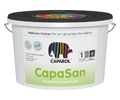
Caparol introduces the first dispersion paints containing no preservative for allergy sufferers.
2002

The facade specialist, alsecco, becomes part of the DAW corporate family and supplements the performance spectrum of the Group as a direct supplier in the property business.
2003
2004

The novel technology for mist-free spraying. The Nespri-TEC® System for mist-free facade spray coating is introduced.
2005

Founding of the Dr. Robert Murjahn Institute for quality inspection for internal and external customers as well as for consultancy on matters of environmental protection and healthy living.
2007

DAW is a founding member of the German Sustainable Building Council (DGNB).
2008

The nano-quartz matrix technology for long-lasting and brilliant facade paints is introduced.
2009

DAW receives the "Top 100 Quality Seal" as one of the 100 most innovative German companies.
The DAW day nursery "Rüsselbande" is opened.
2010

The Sustainability Advisory Board is founded.
2012
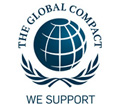
DAW enters the Global Compact.
2012
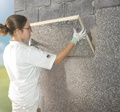
The high performance S024 Insulation Board is introduced and sets new benchmarks in thermal insulation.
2013

The renaming as DAW SE is completed. In the course of this, the new DAW company logo is introduced which is a stylized bucket with handle.
2013
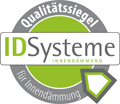
Market launch of the capillary active Capatect Interior Insulation Systems "IDS Aktiv and IDS Mineral" with the novel IDS Thermowinkel (thermal bracket).
2014

Building expansion is started at the DAW Group headquarters in Ober-Ramstadt, Germany. The planning has already been awarded the Advance Certificate in Silver from the German Sustainable Building Council (DGNB) for its high ecological standard.
2014
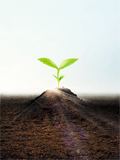
Natural insulation – using sustainable raw materials.
The ecological insulation system made from hemp fibres has received multiple awards in Germany and Austria for its innovation and environmental compability.
The ecological insulation system made from hemp fibres has received multiple awards in Germany and Austria for its innovation and environmental compability.
2015
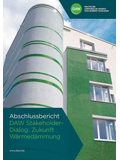
Following five consecutive workshops, DAW presents the results of the Stakeholder Dialogue “The future of thermal insulation” to the public.
2015
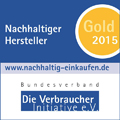
The brands Caparol and Alpina are being awarded by the Verbraucher Initiative e. V. (consumer initiative association) with a gold award as “sustainable manufacturer” which is the highest prize for social and ecological commitment.
2015

The innovative DAW hemp fibre insulation system is nominated for the Austrian state prize for environmental and energy technology, category “Environment & Climate”.
2015
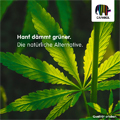
The ecological insulation variant - hemp insulates greener. The innovative hemp facade insulation system from Caparol combines the best qualities in building physics and ecology.
2016
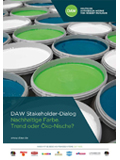
Once initiated in 2014 as the Stakeholder Dialogue, the dialogue was continued on the subject "Sustainable paint. Trend or ecological niche?".
2016
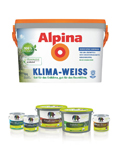
The innovative product ranges CapaGeo and AlpinaKlima are characterized by renewable raw materials as well as a CO2 neutral production.



































